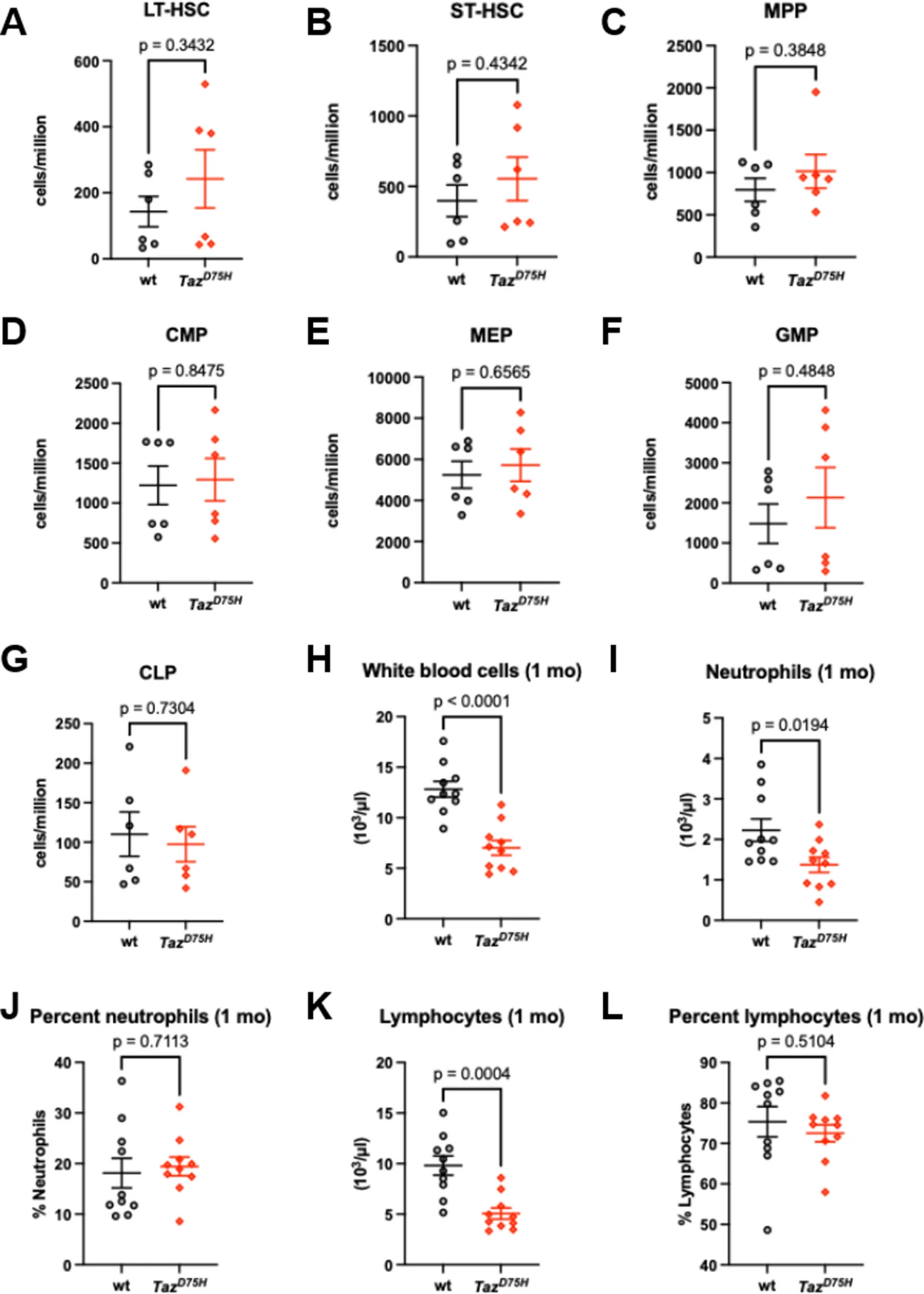
Barth syndrome (BTHS) is an X-linked recessive disorder characterized by cardiomyopathy, skeletal muscle myopathy and fatigue, growth restriction, and neutropenia. Neutropenia increases the risk of life-threatening bacterial infections, a major cause of death in individuals with BTHS. Currently, there is no curative treatment for BTHS or associated neutropenia. The development of therapeutic strategies to correct BTHS-associated neutropenia has been hindered by a limited understanding of the underlying molecular mechanisms involved. BTHS is caused by a mutation in the Tafazzin gene encoding a transacylase required for the maturation of cardiolipin, an inner mitochondrial membrane phospholipid crucial for mitochondrial structure and function. We introduced a BTHS patient’s point mutation (TAZD75H) into the mouse Tafazzin enzyme’s critical acyltransferase site using CRISPR/Cas9-mediated genome editing, resulting in a patient-tailored point mutant knock-in BTHS model (TazD75H) that expresses a stable mutant TazD75H protein lacking transacylase activity. TazD75H mice were then used to investigate how loss of Tafazzin enzymatic activity impacts hematopoiesis. Male TazD75H mice exhibited impaired granulopoiesis and neutropenia secondary to impaired function of hematopoietic progenitors. Furthermore, they demonstrated age-dependent neutrophil maturation impairment reflecting the variable neutropenia observed in BTHS patients. Additionally, male TazD75H mice exhibit chronic lymphopenia that persists post TazD75H bone marrow transplantation. Mechanistically, the TAZD75H point mutation caused hematopoietic cell mitochondrial dysfunction in patient-derived immortalized TAZD75H lymphoblasts, increasing reactive oxygen species production and mitochondrial membrane depolarization. Likewise, Cyclosporine A treatment rescued these mitochondrial phenotypes in vitro, confirming TAZD75H mitochondrial dysfunction. Overall, our findings demonstrate that mitochondrial dysfunction secondary to TAFAZZIN loss of enzymatic function underlies BTHS-associated neutropenia and lymphopenia.




